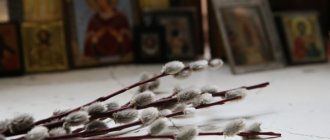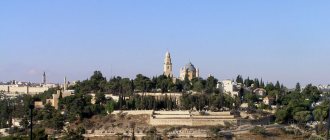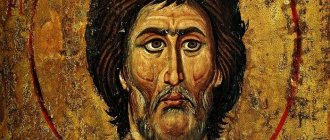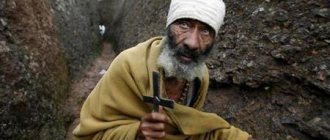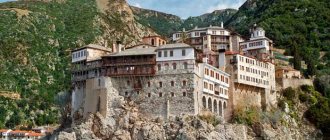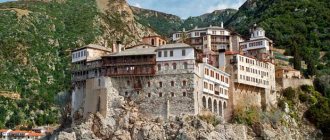Mount Sinai in Egypt is one of the most beautiful places on the planet. It arouses not only admiration, but also controversy: there are different opinions about where the very “mountain of Moses” is located, on which God gave the Prophet the tablets with the commandments.
Interest in this extraordinary place has never lost, excursions are held every day. Both pilgrims and tourists come to him. They are not stopped by the height to which they need to climb in order to breathe the air of human history, take a photo after completing the ascent, and remember this day for the rest of their lives.
Why you should visit Mount Moses in Egypt
Mount Sinai is a unique natural landmark in Egypt
. Mount of Moses. Why do they go there? The flow of travelers to this sacred place does not dry out even in difficult times. Climbing Sinai is not just a great adventure, it is an opportunity to touch the eternal, to be out of time and to feel how vast the world is.
Mount Sinai is the place where Moses met God and received the tablets from Him. There is a legend: those who manage to climb to the top before dawn will have all their sins forgiven. But the sunrise at the top of Mount Moses is worth seeing in itself; An unforgettable, beautiful, very fast transition from night to day will remain a memory for a lifetime.
It is also possible to ride a camel to Mount Sinai, which can be a little scary, a little funny, but a very enjoyable adventure.
And all travelers note the completely alien mountain landscape.
Flora and fauna of Sinai
The mountain is a block consisting of layered rock with the addition of alabaster, which gives a brown tint. The mountain range includes schist and granite. The soil here is loamy and sandy loam, diluted with pebbles. There are no rivers or streams in Sinai, but there is groundwater that lies close to the surface. Water is taken from springs and wells gushing out of the ground.
Due to the poor water supply, the vegetation on the mountain is quite sparse. Here you can find lichens, dwarf acacias, wormwood, camel thorn and various succulents - aloe, spurge.
Of the fauna, only birds, reptiles and insects live on the mountain. Both resident and migratory birds nest in Sinai. Cranes, bluethroats, goldfinches, thrushes, and ducks fly here for the winter. Pigeons, sparrows, and quails nest on the mountain all year round. There are many snakes, lizards and insects in Sinai: Egyptian cobra, efa, viper, monitor lizards, geckos, locusts, scorpions, cockroaches, ants.
Camel rental at Mount Sinai
Where is the Mount of Moses in Egypt on the map
Mount Sinai coordinates: 28.539260, 33.974946, on the Sinai Peninsula, in its southern part, three kilometers south of the town of St. Catherine.
From the Israeli border - about 220 km.
If we move away from purely practical issues, it is worth remembering the riddle that Mount Sinai posed to humanity: where exactly the mountain that is repeatedly mentioned in the Bible is located is a somewhat controversial question. Some researchers consider the question unresolved: where Mount Sinai is located, in which country. However, most of the evidence points to the fact that - after all, in Egypt, exactly in the place we are talking about.
The Legend of the Burning Bush
As mentioned, the Burning Bush is the biblical thorn bush.
The Bible (chapter 3, v. 4, “Exodus”) describes how Moses, wandering with the herds entrusted to him, came across Mount Horeb. There he saw a miracle - a burning thorn bush. And “the Angel of the Lord appeared to him in a flame of fire from the midst of a thorn bush. And he saw that the thorn bush was burning with fire, but the bush was not consumed.” Later, this burning but not burning bush received the name Burning Bush.
In Latin, Dictamnus albus means “punishing bush” or “bush of Moses.” In Rus' it is known as white ash tree. The inflorescences of the bush emit a strong attractive aroma, but those who dare to pick them risk severe burns to their hands. And if you bring a burning match to a bush in hot, windless weather, you can see a flash of blue flame. Sometimes direct sunlight is enough for the bush to spontaneously combust. This is due to the fact that the vapors of essential oils released by the plant envelop it like a blanket. Having reached the maximum permissible concentration, oil vapors can spontaneously ignite. Despite this, the bush remains unharmed.
For a long time, botanists believed that this plant was a fiction, until it was discovered on the Sinai Peninsula. Today you can see the Sacred Bush on the territory of the St. Catherine’s Monastery. However, it is allowed to approach it only at a distance of 10 meters; now it is fenced with a meter-high fence. Such measures were taken after many tourists tried to pick and dry at least a leaf from the bush of Moses as a souvenir.
Distance from Mount Moses to the resorts of Egypt
The closest famous Egyptian resort is Sharm el-Sheikh, so excursions to this holy place are most often organized from there. The small resort town of Dahab is located even closer, and others are not so far away (see table).
| Resort | Distance to Mount Moses |
| Hurghada | 143 km |
| Sharm el-Sheikh | 65 km |
| Marsa Alam | 399 km |
| Dahab | 59 km |
| Mersa Matruh | 717 km |
| El Alamein | 595 km |
| El Gouna | 131 km |
| Taba | 153 km |
| Makadi Bay | 158 km |
Excursions to Mount Moses in Egypt
Excursions are held regularly, and even the weather is not a hindrance.
It is best to buy excursions via the Internet on trusted sites:
- tripster,
- sputnik8,
- getyourguide
This will be more reliable and profitable. You can read reviews about guides and choose the best one.
The most common excursion option: a group of up to 35-40 people (+ an accompanying person) arrives by bus in the evening from a hotel located in the nearest resort town, then, accompanied by a Bedouin, goes upstairs to meet the sunrise on Mount Moses in Egypt.
The excursion is inexpensive, because although it is often positioned as a two-day excursion (departure in the evening of one day, return the next day), it actually takes less than a day. The cost can range from 2,500 rubles per person, depending on the number of tourists in the group, the comfort of the bus and whether food and drinks are included in the price. Book a tour ->>>
Other interesting excursions to Mount Moses, which are popular among tourists:
- Excursion to see the sunrise in Sinai,
- From Sharm El Sheikh: Sinai Hike, Sunrise and Monastery
The Monastery of St. Catherine on Mount Sinai, as a rule, is also included in the excursion program.
Excursions are available from Hurghada, including by ferry, and from other cities in Egypt and Israel.
How to get there
Climbing Mount Sinai is the most popular Egyptian excursion after the pyramids, and can be purchased at all resorts in the Sinai Peninsula. You can simply order a taxi from the hotel to Sinaia. From Sharm el-Sheikh the road takes about 2.5 hours, from Dahab and Taba - about one and a half hours. The cost of such a trip ranges from $80 to $25, depending on transport, the need for excursion support in Russian, provided meals, etc.
excursions are also available at resorts in Israel and Jordan. It usually includes accompanying a guide on the ascent and descent, breakfast (or lunch) and a visit to the monastery of St. Catherine. There are special pilgrimage tours, with the opportunity to spend the night in the monastery and take part in the morning service at the Trinity Church on the top of the mountain.
As a rule, such excursions are not offered from Hurghada - it is too far, but you can order an individual transfer. The easiest way is to take a ferry to Sharm el-Sheikh and go to Sinai from there. This ferry service, unfortunately, is not yet regular; ferries usually run only during the peak tourist season.
Sinaia can be reached by public transport, but it runs infrequently and does not stop at the top of the mountain, but in the village of Sant Catherine, about 10 km away. Buses run from Cairo (about 9 hours travel time) and Sharm el-Sheikh.
Climbing Mount Sinai on video
History of Mount Moses
One of the sacred places on Earth is Mount Sinai. The Bible tells how Moses met God on Mount Sinai and received the tablets from him. This is it, exactly the mountain where the tablets were given to Moses (even if someone doubts). Christians and Muslims have revered this holy place for many centuries. But the mountain is famous not only for this.
In the 9th century BC. the prophet Elijah hid from persecution in a cave on Mount Horeb; many centuries later a temple was built on this site.
In 330, under the mountain, where Moses saw the Burning Bush - a bush that burned and did not burn down, a church was built, and in 527 the monastery of St. Catherine was founded.
Christian ascetics have settled on Mount Sinai since the 2nd century, built temples, chapels and monasteries, and carefully preserved the cave in which Moses prayed for 40 days. From the same time, regular pilgrimages began, and later the monks built a “staircase of repentance” to make the journey easier.
St. John Climacus, called the abbot of Mount Sinai, labored here in the 6th century.
Lots of people always came here; we can say that this mountain is a pilgrimage mountain.
Mount Horeb is also revered by representatives of another world religion - Muslims; a mosque was erected on its top.
Several names of the sacred mountain
The Mount of God, Moses, Horeb, Tur or Jebel Tur Sina - all this is Sinai. There are several versions regarding the etymology of the official name of the mountain. All of them are related to the Hebrew language.
- The first version is associated with the name of the moon goddess - Sin, whose sanctuary was located on the mountain, hence the name - Sinai.
- Senen - Sin, translated meaning blackthorn.
- There is another similar sounding word - sen. Literally translated - tooth. The appearance of the rocks of Sinai reminds many of them of sharp teeth.
- Sinai is translated from Hebrew as “multi-peaked mountain.” The Sinai mountain range does have many peaks.
All versions are understandable and look plausible, but which of them is the truth - researchers have to figure out.
Attractions of Mount Moses
Attractions of Mount Moses
The listing itself is impressive:
- cave of Moses; where, according to legend, the great prophet prayed for 40 days before God appeared to him;
- Church of the Two Prophets: Elijah and Elisha; this is the oldest temple on Mount Sinai, it has stood here since the 11th century (earlier buildings have not survived). It is believed that it was in that place that the prophet Elijah prayed two thousand years before the construction of the temple;
- stone arches erected over the passages; 10 of them were built, as a sign that Moses received the 10 commandments on the mountain; not all of the arches have been preserved, but they look amazing;
- a lake and a well from which the prophet Elijah, who hid for some time in those places, drew water;
- Church of Our Lady of Ikonomissa, the most striking legendary event related to this landmark is the appearance of the Virgin Mary to the rector;
- Orthodox churches of the Deposition of the Robe, St. Anna, St. Panteleimon;
- Church of the Holy Trinity: it existed from the 6th to the 18th centuries, and in the last century it was rebuilt in the same place, on the top;
- a mosque built in the 12th century there, on the top, in honor of the visit of Sinai by the Prophet Muhammad.
- At the foot of the mountain is the famous monastery of St. Catherine.
Climbing Mount Moses
You have to climb the Mount of Moses in complete darkness in order to meet the dawn at the top.
Here in front of the traveler is the Mount of Moses in Egypt; how many steps do you have to go through? What difficulties and joys lie ahead?
The traveler steps onto the path in the dark, deep at night. He walks, lighting his way with a flashlight, which you can do without only during a full moon in cloudless weather. The journey to the top will take several hours - with stops, with inevitable fatigue, but also with a wonderful feeling of approaching something very important.
If a tourist or pilgrim walks during the day, which happens less often, then along the entire route he sees how extraordinary Mount Moses is; signs of the miraculous and extra-worldly are found throughout the entire ascent.
In any case, it is quite possible to climb on your own (not in a group or without a guide): the routes to the top have been used for centuries. But a traveler outside an organized group must find out everything about these routes in advance, take care of his safety and calculate everything correctly.
Paths to Mount Moses
You can climb Mount Moses (Egypt) along one of two paths.
The first is the “path of the monks” (Mount Sinai was developed over centuries by the hands of monks), or in other words, the “ladder of repentance”. It consists of 3,750 steps. It is quite steep, and a traveler, passing along it, sometimes loses sight of it for a while and is forced to literally jump from stone to stone.
Tourists often use another path, longer and gentler. The length of the route is slightly longer - about 6 km. Along this path, or rather, along most of it, it is not only easier to climb, but you can even ride a camel.
How long does it take to climb Mount Moses?
The journey to the top takes 2 hours, but for this you need to be, for example, a monk accustomed to physical activity. For a person who is not very trained, elderly or not quite healthy, much more time will be required. In addition, it is cold on the mountain, and you have to stop to warm up (there are opportunities for this; several small cafes have been built along the “camel trail”).
Darkness also slows down movement, and a traveler climbing during daylight hours will involuntarily stop to admire the views and take photographs. Therefore, although the length of the trail is not so long that you will be at the top by a certain time, it is better to start the climb no later than 3-4 hours in advance.
Meeting the dawn on Mount Moses
Watching the sunrise on Mount Sinai attracts tourists from all over the world.
Travelers usually climb Horeb at night to watch the sunrise there, unless, of course, there is some other purpose.
Some people get up at the beginning of the night and rest for several hours on the top (by borrowing blankets from local residents for a fee, you can even settle down to sleep), others come closer to the morning. But just before sunrise, all convenient places will be occupied.
The sun rises early in Sinai even in winter, so you won't have to wait long. The darkness of the night begins to turn gray, gradually disappearing; The slopes of the mountain are illuminated by the morning rays and turn out to be incredibly beautiful. Then the solar disk appears and quickly rises above the horizon.
Perhaps not everyone feels cleansing and renewal at this moment, but everyone gets the joy of contemplating the birth of the day.
Temperature on Mount Moses
It's almost always cold at the top, even in the middle of summer. It is especially cold at night, that is, just when the ascent is usually made.
Considering that it is warm during the day at the foot of the mountains, you will have to dress in layers: put on light clothes, a jumper, and a jacket. However, in the summer most travelers do not have jackets with them, which means they will have to wear more warm clothes, and perhaps use the blankets that the Bedouins offer for rent.
Sinai: face to face with God (+PHOTO)
The dawn over Sinai transforms the entire mountain range.
For both the pilgrim who wants to touch the greatest shrines and the tourist who wants to see places that are declared a heritage of mankind by UNESCO for their historical, artistic and natural significance, the Sinai Peninsula is a special point on the surface of the globe.
To see Sinai with your own eyes means to see and experience something that will be remembered for a lifetime. And if you manage to take a photo, the memories will be even clearer, brighter, deeper. Our family archive contains photographs of Sinai: mine and those taken by my daughter when she and her husband also climbed the sacred mountain of Moses. We all decided on this difficult pilgrimage when we were in Egypt. Only this happened in different years and at a time when there was no coronavirus yet and getting to the Sinai Peninsula was not so difficult.
Sinai is a place of spiritual quest
Many years have passed since then, but I remember everything as if it were yesterday. Especially when you look at the photographs taken during those memorable travels, or hear the names of the holy prophets Moses, Elijah, the Great Martyr Catherine, or think about the commandments of God.
***
The burning bush is the same one that burned without burning Egypt - the ancient country of pyramids and pharaohs. Nowadays it is a state in which the overwhelming majority of residents profess Islam. And yet, Egypt is also a land that is famous for its many Christian ascetics and holy places.
So, if the plane lands in Sharm El-Sheikh, you find yourself on the Sinai Peninsula, which means very close to Mount Horeb, sacred to many peoples, or Mount Moses, which the local Bedouins call in their own way - Gebel Musa. It was here that the prophet received the tablets of commandments from God Himself. It was along these deserted, sun-dried valleys of Sinai that the Jews walked from Egyptian slavery to the Promised Land. Here, at the foot of Gebel Musa, the Burning Bush still grows - the same one that burned without burning when God spoke to Moses. Here, on the slope of Mount Horeb, at an altitude of 1570 meters, stands the Orthodox monastery of St. Catherine - one of the most ancient in the world.
At the top, many pilgrims wrap themselves in blankets
At the foot of Gebel Musa, the Burning Bush still grows - the same one that burned without burning when God spoke to Moses
Sinai is inextricably linked with the names of many great saints. Back in the 3rd century, attracted by the sacredness of this place, hermit monks began to settle in its caves. And in 330, Saint Helena, the mother of Emperor Constantine, built a chapel over the roots of Kupina, which marked the beginning of the creation of the future monastic monastery. Its powerful, impregnable walls, more reminiscent of a fortress than a monastery, were erected by Emperor Justinian in the mid-6th century.
***
Climbing Mount Sinai is possible throughout the year and always starts at night - it is too hot during the day, and the sunrise in the mountains is magnificent.
My pilgrimage began from the monastery of St. Catherine, where a minibus took us from Dahab through Egyptian military checkpoints. Further - on foot.
I have a flashlight, warm clothes and packed lunches in my backpack, which is carried by one of my companions, experienced climber Sergei Sudnik. A young Bedouin guide shows the way to the top of Gebel Musa, which is 2285 meters above sea level. The walk takes three to four hours.
Clothing, life, traditions of the Bedouins have not changed for centuries
We walk in complete darkness. The flashlight beam snatches a tiny part of the path from the oil-black night - but at least you can see where to put your foot. And the guide moves as confidently as if he can see in the dark. Let's go silently. Occasionally from the darkness one hears: “Camel?” I direct a ray of light there: camels lazily chewing cud, and a Bedouin who offers to take us closer to the top of the mountain. Thank you, while you have enough strength!
These Bedouins are an amazing people - their appearance and homes reek of hoary antiquity. Their clothes, way of life, traditions, and way of life have not changed for centuries. Unless they use plastic and wear sneakers. Bedouins are Muslims, although they were once Christians in ancient times. However, the men of the Jebeleyah tribe still serve the pilgrims going to Sinai and perform various tasks within the walls of the monastery of St. Catherine.
***
Stars. Their light is so rich, as if the sky is very close. But there is no time to look at them yet. All eyes on the trail. The sky is getting closer, but there is less strength, there is not enough air - your breathing is becoming difficult. The climber suggests that you should not take deep breaths, but breathe often and quickly. This way, at high altitudes, the lungs are better ventilated. The body seems to be filled with lead - one step, another... It’s so hard! Oh, a camel! And the Bedouin guide’s gait is still light, like that of a mountain deer. I ask how often he climbs. He says, choosing individual Russian words, that in a day. Wow! A true son of the mountains! He offers his hand, I lean on it and finally overcome the last section of the steep staircase without railings, leading, without exaggeration, to the very sky.
***
Temple of the Holy Trinity at the top of Sinai
It's very cold at the top. The wind is piercing. Our guide suggests climbing some unstable structure into a crevice where there is less wind, and disappears. We hide and wait for dawn.
We, living in the 21st century, want to see this place, to become involved in its mystical, Divine silence
We arrived on time - the sky in the east begins to brighten. Every second, no, half a second, its color changes. Light cirrus clouds shimmer with indescribable shades of red, pink, gold, scarlet, and red. The East is magnificent! The world seems to be born again before our eyes: “And there was evening, and there was morning” (Gen. 1).
I mentally say the shortest prayers: “Our Father,” “Heavenly King.” I don't want to be verbose. I don’t want to ask God for something. Although many have made and are making the difficult climb to Horeb for the forgiveness of sins. Lord, I just want to feel Your presence in the “chilling voice” (1 Kings 19:12), in the breath of the quiet wind, as was given to the prophet Elijah.
For some reason, it was here, on Sinai, that great people, holy people - Moses and Elijah - were given the opportunity to know the One God, to meet Him, to communicate. For some reason, right here. This mountain has been consecrated more than once by the special presence of the Almighty. And we, living in the 21st century, want to see this place, to become involved in its mystical, Divine silence.
The bell tower of the monastery of St. Catherine on Sinai Only a few hours will pass, and below, next to the Burning Bush, where Moses was told: “Take off your shoes from your feet, for the place on which you stand is holy ground” (Ex. 3: 5) ), the guide who will meet us at the monastery of St. Catherine, as it were, will continue my thoughts, saying:
“Sinai is a place that symbolizes the inner path, growing up, meeting one’s depth as a Divine image, meeting with God. Moses met the Living God, calling for movement, for dedicating one’s life to Him Alone and teaching one to live in trust and uncertainty. He showed the chosen people that He is the King, the Lawgiver, the Judge, the Guide, and the Provider. Elijah also sought God. I searched in fire and strength, but the answer was in silence, in weakness, in secrecy, in darkness, in solitude...”
***
Among the stones, on the terraces of the mountain, many people from all over the globe gathered. Many are wrapped up in blankets. And Moses here, at the top, spent 40 days and nights without a jacket and blanket, without tea and dry rations.
We wrap our heads in a blanket, and Moses spent 40 days and nights here without a jacket, without tea and dry rations
The dawn over Sinai transforms the entire mountain range. The sun brings warmth, light, joy, and general revitalization. New day. Brand new! Cameras are actively clicking. I'm filming too. Photos will help preserve what memory misses.
I also buy stone from the Bedouins. From the outside it is unremarkable and nondescript. I would never have guessed that inside there was a cavity with dazzlingly shiny crystals. This is the Tear of Moses. They say that these are the frozen tears of a prophet who mourned the sins of his people. A beautiful legend... And useful.
***
One wrong move and you can fall down. We begin the descent. The stream of people, like a fast mountain stream, rushes down to the foot of Gebel Musa. It would seem that it would be easier to go down. Not so! If the path up partly consisted of stone steps, then the shorter, “monastic” path, along which we decide to go down, consists entirely of steps. But we don't know about it yet.
The fatigue is incredible! Although during the ascent I managed to take a nap for an hour in a Bedouin hut-cafe, I really want to sleep. Every step is over a steep cliff, one wrong move and you can fall down. But God protects us! Sunlight finally makes it possible to see the mountain itself. These reddish rocks with their intricate shapes and gaps seem to be carved by water, but there has never been a river here. It's the wind. Centuries of his hard work have turned the stones into chiseled sculptures. And the shade of the stone is as if it has absorbed the color of dawn.
***
There is a majestic view of the monastery. Its small community, consisting mainly of Greeks, is practically autonomous and independent - it is headed by the Archbishop of Sinai, who is elected by the senior monks and ordained by the Patriarch of Jerusalem. It has its own charter, its own ancient traditions. The monastery even has its own coat of arms and flag! For more than 1,400 years of existence of the monastery, spiritual and monastic life has never been interrupted here, and the Divine Liturgy has always been celebrated.
The walls of St. Catherine's Monastery are impressive with their power!
The walls of the monastery are impressive with their power. Previously, it was possible to get inside only through special elevators, similar to large birdhouses. People and food were lifted in baskets to a height of 15 meters. Now they enter through a narrow, low door directly under the elevator. We said goodbye to our Bedouin guide, and now we are being led by a new guide - Muscovite Svetlana Folomeshkina.
***
Having passed the well of Moses, near which the prophet, according to legend, met his wife Zipporah, we are approaching the Burning Bush. I look at the sacred bush for a long time and try to remember all the deepest meanings and prototypes associated with it. There are so many of them! But the most important is the reminder associated with the Mother of God, with the mystery of the incarnation of God through Her.
Even in ancient times, the bush was transplanted slightly to the side so that the throne of the chapel, which the holy Queen Helen built here, would be exactly above the place where the Lord appeared to Moses, that is, above the roots of the sacred plant. Botanists classify it as a member of the Rutaceae family, the Russian name is ash tree. They say it has amazing properties. The leaves and trunk of this plant are dotted with glands that secrete essential oils. If you bring fire to it, then in calm weather it will flare up stronger and engulf the twig for a moment, but will not harm it.
I did not have the opportunity to visit the chapel, where pilgrims, out of reverence, enter without shoes, remembering that the great Moses stood barefoot in this holy place. But here, in the monastery, everything is so holy and ancient that, probably, it is enough to put your palm on any stone to say: “I touched a shrine, I was on a mountain where God spoke to man face to face!”
***
We go to the “treasury of the monastery”. We spend a long time admiring the masterpieces of jewelry - liturgical objects made of precious metals and gems. But I am more impressed by the icons made using the encaustic technique (paints are mixed with hot wax). Everything collected here is unique and priceless. The same can be said about the ancient manuscripts from the monastery library, which is considered the second in the world after the Vatican in terms of the wealth of collected books. This library contains parchment pages of the Codex Sinaiticus (5th century), the oldest manuscript of the Bible found.
The treasury contains another unique document: a copy of the safe conduct received by the monks in 623. It is “signed”... with the handprint of Muhammad. The Firman states that Muslims will protect the monastery from attacks and also exempt it from paying taxes.
On the territory of the monastery there is still a mosque built at the beginning of the 12th century so that the Bedouins working in the monastery could perform their prayers. Nearby is a bell tower with nine bronze bells. We hear the ringing of one of them (and this is a special privilege of the monastery, because in Muslim countries Christians are forbidden to ring bells). This is a sign for pilgrims.
Reliquary with the relics of St. Catherine in the Sinai Monastery
***
Svetlana invites us to go to the Church of the Transfiguration of the Lord. You can talk endlessly about this temple and its shrines! But this time my main interest is the relics of the Holy Great Martyr Catherine. It is very impressive that the Sinai monastery, originally called the Monastery of the Transfiguration or the Monastery of the Burning Bush, has been renamed in honor of this saint since the 11th century.
Basilica of the Transfiguration and bell tower. Photo: prot. Igor Pchelintsev
The head and left hand of the great martyr appeared in the monastery in a completely miraculous way. The holy virgin lived and was executed by the pagans in Alexandria (that is, on the other side of Egypt) around 305. Three centuries later, the monks of the Sinai monastery, having received a special revelation from above, found her holy remains on the top of the highest mountain in Sinai, next to Gebel Musa.
Ring of Saint Catherine
The Sinai Mountains are the place where two great prophets sought God and met Him
The Sinai Mountains are the place where two great prophets sought God and met Him. And, apparently, it is no coincidence that this sacred place is also associated with the name of St. Catherine. Our guide Svetlana made us think about this when she expressed an unexpected thought:
“During her lifetime, Catherine had never been to Sinai and, perhaps, did not even know anything about this place. It seems to me that she was connected with Sinai because she was internally connected with the events that happened here with other people.
Moses and Elijah were looking here for the One who is and will always be. But Catherine was looking for more than just that. She was looking for Love, which is and will always be. And, most likely, she was the first in this..."
Saint Catherine of Alexandria, with her life In memory of the veneration of the relics of the great martyr, the monks give all pilgrims a silver ring with the coat of arms of the monastery and the words in Greek: Agia Catherine (St. Catherine). I approach the casket with the shrine. An elderly monk with an infinitely kind smile gestures that I should not forget to lift the edge of my cap - he might interfere with kissing the casket. God! There is so much love and care in this gesture. I touch the shrine with my lips, and a monk standing nearby hands me a ring.
***
Photos, stone, ring. Such a tangible, simple and at the same time precious reminder of the insubstantial - of the sacred and mysterious Sinai. About the place of spiritual quest, about the harsh mountains that awaken in a person a thirst for truth and insight, where an intense internal search leads to the feat of self-knowledge, to a meeting with one’s innermost self and with God.
Hotels near Mount Moses in Egypt
on Mount Sinai, Bedouins sell souvenirs and offer blankets for rent.
Pilgrims and tourists traveling on their own can stay in a hotel quite close to the holy mountain: in Dahab, which is less than 50 km away, or very close - in the village of St. Catherine. Comfort levels vary.
The most popular hotel booking sites for tourists:
- Booking (you probably already have an account here)
- Roomguru (compares prices across all booking systems, even with the same booking)
In the village and very close to it:
- Pension Daniela Village; accommodation is comfortable, there are bathrooms and air conditioning, there is a restaurant, bar, cafeteria;
- Sheikh Mousa Bedouin camp hotel – more affordable rooms for two, with good bathrooms;
- Holy Valley Hotel – spacious rooms with everything you need, a swimming pool is open in the summer; Breakfast is included in the price;
- Eid lodge – stone houses, everything is cheap and simple; the rooms offer a beautiful view;
- four-star hotel Katherine Plaza - it has a restaurant and bar, rooms with air conditioning;
- hotel/camping Safari Camp – unlike other places with affordable prices, the rooms are equipped with beds (and not just mattresses on the floor);
- Saint Catherine's Monastery Guesthouse hotel – located very close to the monastery, the windows offer wonderful views, the rooms are double, but are quite expensive;
- Saint Catherine Tourist Village hotel – considered the best; located close to the monastery of St. Catherine; Breakfast and dinner are included in the room rate.
Five kilometers from Mount St. Moses, Morgen Land Villadge offers dormitory accommodation; there is a restaurant.
Monastery of St. Catherine
One of the attractions located near Mount Sinai is the monastery of St. Catherine, ancient and amazing. It appeared on the site of a small chapel, which was ordered to be built by the Byzantine Empress Helen Equal to the Apostles, mother of Emperor Constantine, after she visited the Holy Mountain. She went on her pilgrimage after learning about the biblical parable about the bush that burned under the prophet Moses - the Burning Bush.
In 324, near the Burning Bush, Empress Helena supported the construction by the monks of a small chapel - a chapel. Over time, a whole monastery was established on the site of the chapel , the inhabitants of which were Orthodox Greeks. Since the Burning Bush monastery was often subject to raids by nomadic tribes, two centuries later, in 537, the Byzantine Emperor Yunistian I rebuilt the stone monastery in the form of a fortified fortress. In this form, with high fortress walls with loopholes, it has been preserved to this day.
However, from the 11th century, the monastery of the Burning Bush was renamed the monastery of St. Catherine in honor of the martyr, born at the end of the 3rd century. It was a difficult time for Christians - paganism remained the main religion of Egypt, and preachers of Christianity were persecuted, brutally tortured and killed. But even at the cost of their lives, becoming martyrs, people who accepted and came to know faith in Christ carried his word. One of these enlighteners was a beautiful, educated and intelligent girl from a noble family of Alexandria - Dorothea. Having converted to Christianity, she received the name Catherine and devoted her life to preaching.
The monastery is located at an altitude of just over 1570 meters and is considered the oldest Christian building in the world. It includes more than a hundred buildings and resembles a small town.
Tips for those going to Mount Moses in Egypt
- Wear comfortable, warm and durable shoes, otherwise the climb may be hopelessly ruined.
- Wear or bring warm clothing.
- Take a flashlight so that the ascent to Mount Moses is not complicated by darkness.
- Egypt is the land of camels; Don't be scared by the eerie predatory cries of these animals.
- Don't forget to take some money with you for souvenirs and unexpected expenses.
- Don't stay at the very top for long, it's coldest and windiest there.
- Take some food and drink (preferably in a thermos).
- It’s better to go up the long road, and to get the full experience you can go down the “monks’ path.”
Mount Sinai in Egypt (Mount of Moses), where there are so many attractions related to three world religions, will leave an indelible impression on the traveler who has made the ascent. The height will be conquered by the walker, joy will settle in the soul, and the videos and photos taken will remind you of the excursion for a long time.
Please rate how useful this article was to you! ( 1 ratings, average: 5.00 out of 5)
Share:
